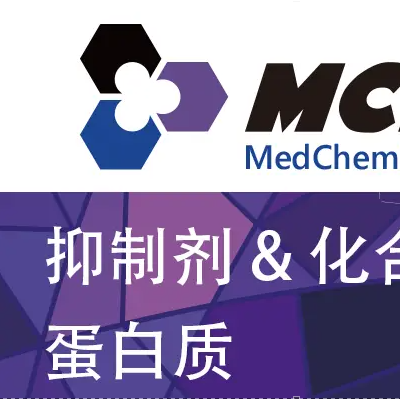      |

MCE 国际站:Polyinosinic-polycytidylic acid
CAS:24939-03-5
品牌:MedChemExpress (MCE)
存储条件:Powder: -20°C, 3 years.In solvent: -80°C, 6 months; -20°C, 1 month.
生物活性:聚肌胞苷酸 (Poly(I:C)) 是一种合成的双链 RNA (dsRNA),是一种 Toll 样受体 3 (TLR3) 激动剂。聚肌胞苷酸存在于某些病毒中,因此通常用于模拟细胞外 dsRNA 的作用。
体外:Polyinosinic-polycytidylic acid (0.5-5 μg/mL, 3-24 h) 呈现剂量和时间依赖性增加诱导永生化气道上皮细胞的细胞旁通透性[4]。 Polyinosinic-polycytidylic acid (5 μg/mL, 24 h) 对 16HBE14o- 细胞没有细胞毒性[4]。 Polyinosinic-polycytidylic acid (5 μg/mL, 6 h) 在 16HBE14o- 细胞中诱导上皮顶端连接复合体和紧密连接的破坏[4]。 MCE has not independently confirmed the accuracy of these methods. They are for reference only.
体内:Polyinosinic-polycytidylic acid (2.5-10 mg/mL, Stereotaxic injection, single dose) 在脑黑质和背外侧纹状体中诱导持续的炎症反应[2]。 Polyinosinic-polycytidylic acid (10 μg/mouse, Intraperitoneal injection, single dose) 降低小鼠的肺肿瘤生长[3]。 Polyinosinic-polycytidylic acid (1.25 mg/kg, Intraperitoneal injection, single dose) 在 MCAO 模型小鼠中通过 TLR3 下调TLR4/MyD88 信号通路发挥脑缺血再灌注损伤的治疗作用[5]。 MCE has not independently confirmed the accuracy of these methods. They are for reference only. Animal Model: lung tumor-bearing mice[3] Dosage: 10 μg/mouse Administration: Intraperitoneal injection (i.p.) Result: Induced a significant decrease in the growth of pulmonary metastases in tumor-bearing mice. Reduced the amount of lung foci to ≈ 40%. Significantly increased BAL fluid cell numbers. Increased the level of INF-γ and IL-17A, decreased the levels of IL-13. Increased TLR3 expression. Animal Model: Middle cerebral artery occlusion (MCAO) model mice[5] Dosage: 1.25 mg/kg Administration: Intraperitoneal injection (i.p.) Result: Reduced focal cerebral I/R injury. Increased the expression of Bcl2, Hsp27, and Hsp70, decreased Bax expression, and reduced cellular degeneration and apoptosis. Protected against cerebral ischemia and conferred protection against cerebral I/R injury through the downregulation of TLR4 signaling via TLR3.
热销产品:Ginsenoside Rh2 | PMSF | GW3965 (hydrochloride) | Sodium 4-phenylbutyrate | 2-Hydroxy Atorvastatin-d5 (disodium) | Erlotinib | Elinzanetant | TBHQ | GSK2795039 | Relatlimab
研究领域:Immunology/Inflammation | Apoptosis | Cell Cycle/DNA Damage | metabolic Enzyme/Protease
作用靶点:Toll-like Receptor (TLR) | PKD | HSP | Bcl-2 Family | Interleukin Related
Trending products:Recombinant Proteins | Bioactive Screening Libraries | Natural Products | Fluorescent Dye | PROTAC | Isotope-Labeled Compounds | Oligonucleotides
参考文献:
[1]. Alexopoulou L, Holt AC, Medzhitov R, Flavell RA. Recognition of double-stranded RNA and activation of NF-kappaB by Toll-like receptor 3. Nature. 2001;413(6857):732-738.
[2]. Matsumoto M, Kikkawa S, Kohase M, Miyake K, Seya T. Establishment of a monoclonal antibody against human Toll-like receptor 3 that blocks double-stranded RNA-mediated signaling. Biochem Biophys Res Commun. 2002;293(5):1364-1369.
[3]. Cheng Y, Xu F. Anticancer function of polyinosinic-polycytidylic acid [J]. Cancer biology & therapy, 2010, 10(12): 1219-1223.
[4]. Deleidi M, Hallett P J, Koprich J B, et al. The Toll-like receptor-3 agonist polyinosinic: polycytidylic acid triggers nigrostriatal dopaminergic degeneration [J]. Journal of Neuroscience, 2010, 30(48): 16091-16101.
[5]. Forte G, Rega A, Morello S, et al. Polyinosinic-polycytidylic acid limits tumor outgrowth in a mouse model of metastatic lung cancer [J]. The Journal of Immunology, 2012, 188(11): 5357-5364.
[6]. Rezaee F, Meednu N, Emo J A, et al. Polyinosinic: polycytidylic acid induces protein kinase D–dependent disassembly of apical junctions and barrier dysfunction in airway epithelial cells [J]. Journal of Allergy and Clinical Immunology, 2011, 128(6): 1216-1224. e11.
[7]. Wang P F, Fang H, Chen J, et al. Polyinosinic-polycytidylic acid has therapeutic effects against cerebral ischemia/reperfusion injury through the downregulation of TLR4 signaling via TLR3 [J]. The Journal of Immunology, 2014, 192(10): 4783-4794.